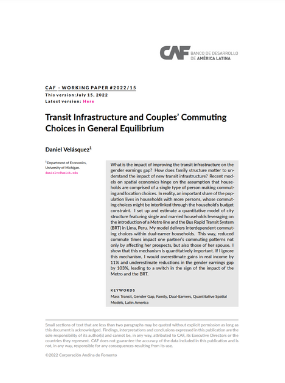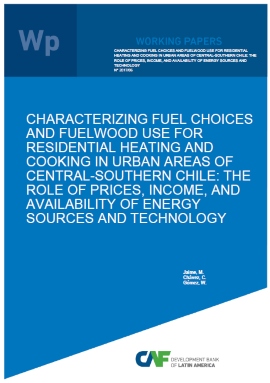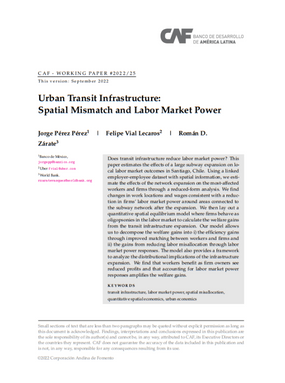Transit Infrastructure and Couples’ Commuting Choices in General Equilibrium
Resumo
What is the impact of improving the transit infrastructure on the gender earnings gap? How does family structure matter to un‐derstand the impact of new transit infrastructure? Recent mod‐els on spatial economics hinge on the assumption that house‐holds are comprised of a single type of person making commut‐ing and location choices. In reality, an important share of the pop‐ulation lives in households with more persons, whose commut‐ing choices might be interlinked through the household’s budget constraint. I set up and estimate a quantitative model of city structure featuring single and married households leveraging on the introduction of a Metro line and the Bus Rapid Transit System (BRT) in Lima, Peru. My model delivers interdependent commut‐ing choices within dual‐earner households. This way, reduced commute times impact one partner’s commuting patterns not only by affecting her prospects, but also those of her spouse. I show that this mechanism is quantitatively important. If I ignore this mechanism, I would overestimate gains in real income by 11% and underestimate reductions in the gender earnings gap by 103%, leading to a switch in the sign of the impact of the Metro and the BRT.
Assunto
País / Región
Data
2022-07-22Cite esta publicação
Item que pertence à coleção
Autor
Velásquez, DanielItems Relacionados
Characterizing Fuel Choices and Fuelwood Use for Residential Heating and Cooking in Urban Areas of Central-Southern Chile: the Role of Prices, Income, and the Availability of Energy Sources and Technology
This paper analyzes empirically the determinants of fuel choices and intensity of fuelwood use for residential heating and cooking in central-southern ...
Just Energy Transition / Scenarios for Colombia
Colombia stands out for its energy matrix, where hydropower plays a predominant role, and its refining capacity, which allows the country to meet both ...
Urban Transit Infrastructure: Spatial Mismatch and Labor Market Power
Does transit infrastructure reduce labor market power? This paper estimates the effects of a large subway expansion on local labor market outcomes in ...





